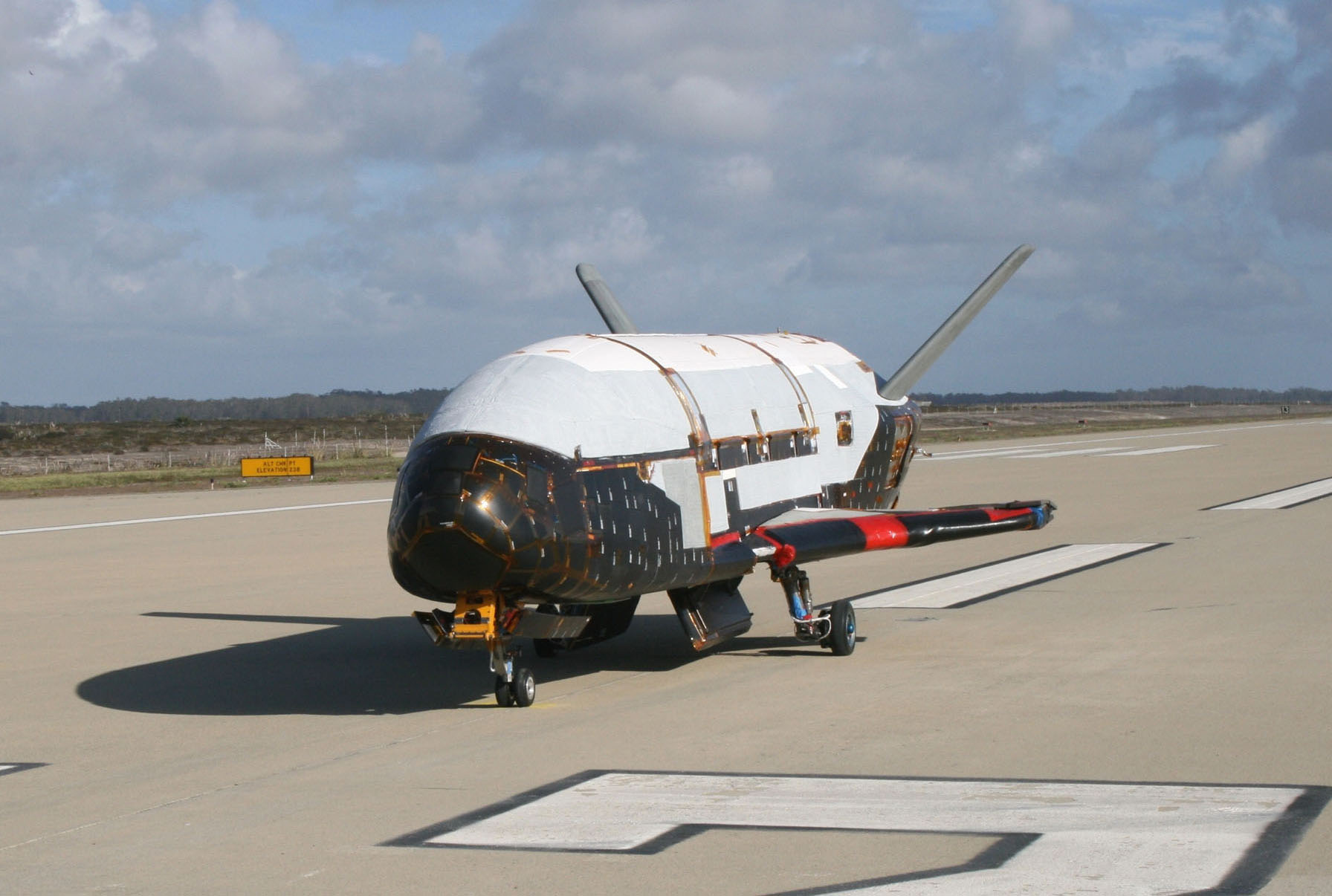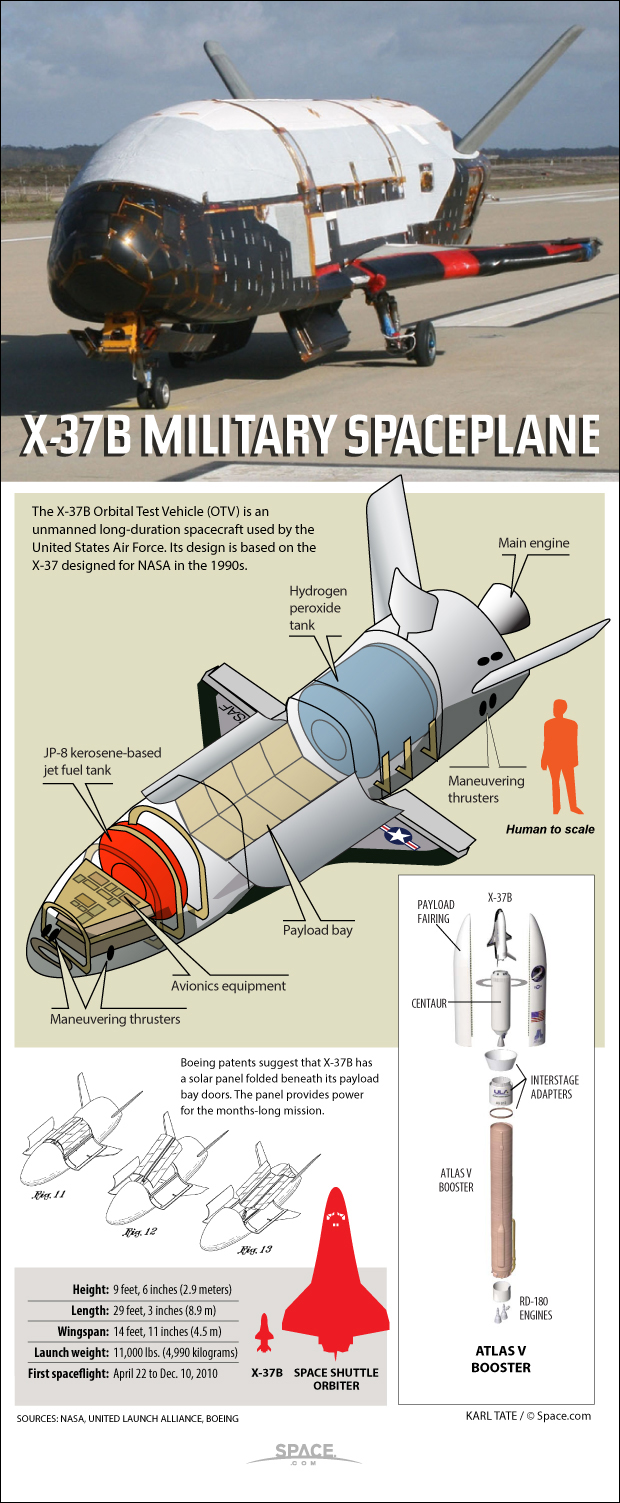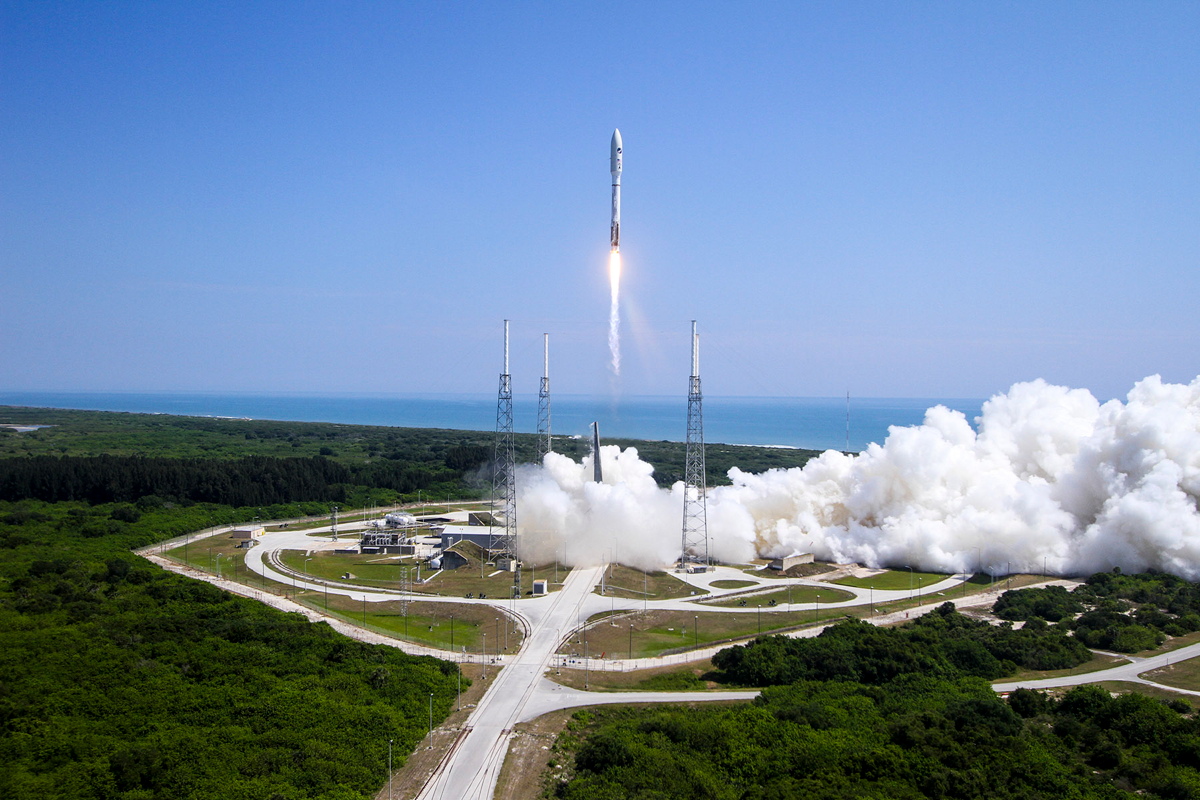Air Force's Mysterious X-37B Space Plane Nears Orbital Record

If the robotic vehicle stays aloft until March 25, it will break the X-37B mission-duration mark of 674 days, which was established back in October 2014.
It's unclear whether that will actually happen, however; the Air Force is tight-lipped about most X-37B payloads and activities, including touchdown plans. [The X-37B's Fourth Mystery Mission in Photos]
"The landing date will be determined based on the completion of the program's on-orbit demonstrations and objectives for this mission," Capt. AnnMarie Annicelli, an Air Force spokeswoman, told Space.com via email when asked when the current mission might end.
The uncrewed X-37B (also known as the Orbital Test Vehicle, or OTV) looks a lot like NASA's now-retired space shuttle, only much smaller. The X-37B is just 29 feet (8.8 meters) long and 9.6 feet (2.9 m) tall, with a wingspan of about 15 feet (4.6 m). Two of the vehicles could fit inside a space shuttle's payload bay.
The Air Force is known to have two X-37Bs, both of which were built by Boeing. These twin craft have flown four missions to date. OTV-1 launched on April 22, 2010, and landed on Dec. 3 of that year, spending 224 days in orbit. OTV-2 started on March 5, 2011, and wrapped up on June 16, 2012, after 468 days in space. OTV-3 launched on Dec. 11, 2012, and landed on Oct. 17, 2014, after circling the Earth for more than 674 days.
The current mission, OTV-4, lifted off on May 20, 2015.
All four X-37B flights have launched from Florida's Cape Canaveral Air Force Station, and the first three landed at Vandenberg Air Force Base in California. But the Air Force has been working to consolidate X-37B launch and landing activities on Florida's Space Coast, and that vision includes bringing the vehicles down at the Shuttle Landing Facility at NASA's Kennedy Space Center (KSC), which is next door to Cape Canaveral. [The X-37B Space Plane: 6 Surprising Facts]
Breaking space news, the latest updates on rocket launches, skywatching events and more!
Rumors have swirled that OTV-4 will land at KSC, but that's all they are at the moment — rumors. Capt. Annicelli declined to confirm or refute such speculation.
"While the program has the capability to land at either KSC or Vandenberg, the landing location is determined by a variety of factors," she said.
Because of the secrecy surrounding the X-37B program, some people have speculated that the vehicle is a space weapon. But the Air Force has always vigorously contested such claims, saying that the space plane is simply testing technologies and helping researchers conduct in-space experiments.
"Technologies being tested in the program include advanced guidance, navigation and control, thermal-protection systems, avionics, high-temperature structures and seals, conformal reusable insulation, lightweight electromechanical flight systems, advanced propulsion systems and autonomous orbital flight, re-entry, and landing," the Air Force's X-37B fact sheet states.
Follow Mike Wall on Twitter @michaeldwall and Google+. Follow us @Spacedotcom, Facebook or Google+. Originally published on Space.com.

Michael Wall is a Senior Space Writer with Space.com and joined the team in 2010. He primarily covers exoplanets, spaceflight and military space, but has been known to dabble in the space art beat. His book about the search for alien life, "Out There," was published on Nov. 13, 2018. Before becoming a science writer, Michael worked as a herpetologist and wildlife biologist. He has a Ph.D. in evolutionary biology from the University of Sydney, Australia, a bachelor's degree from the University of Arizona, and a graduate certificate in science writing from the University of California, Santa Cruz. To find out what his latest project is, you can follow Michael on Twitter.


